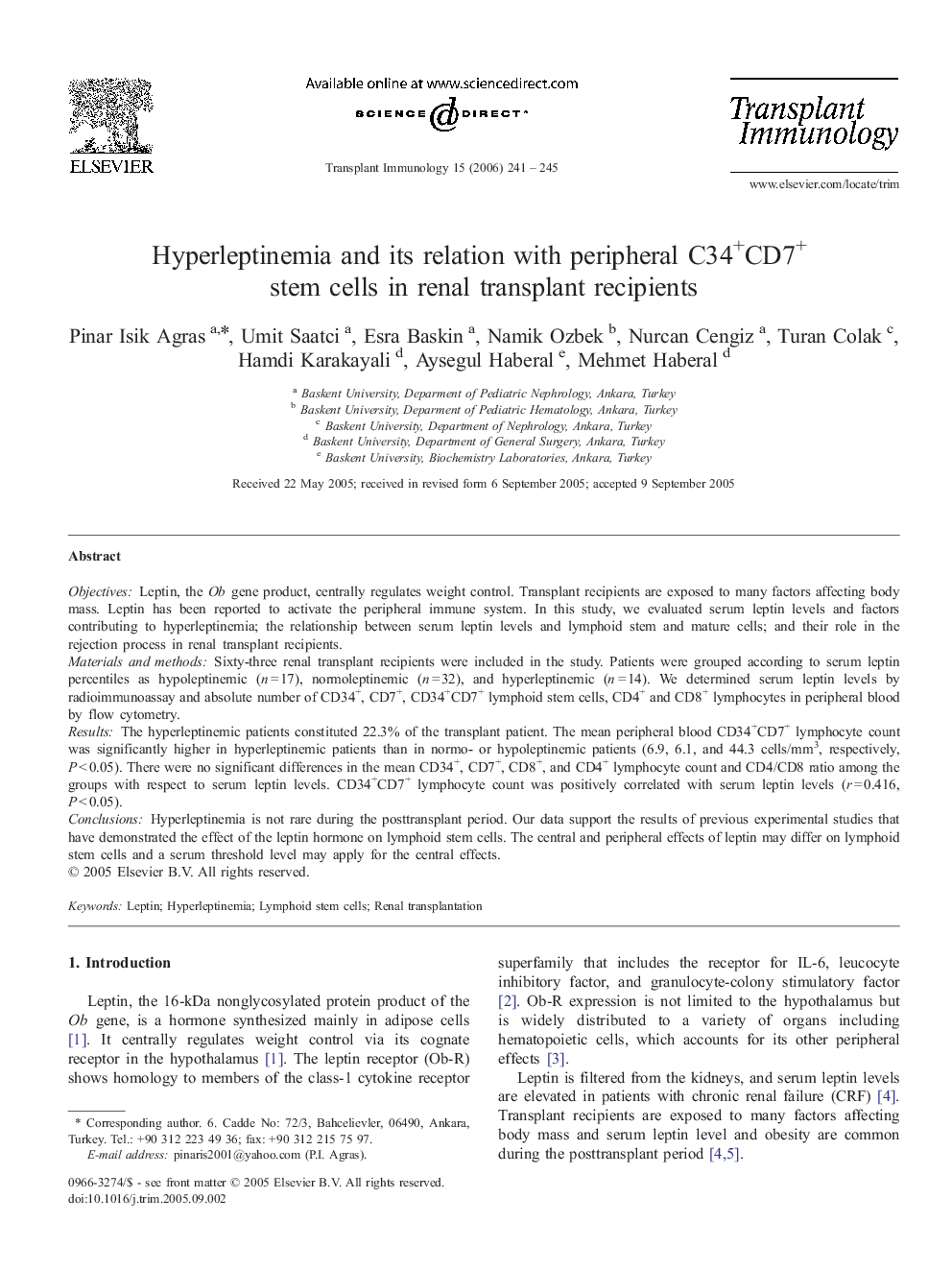| Article ID | Journal | Published Year | Pages | File Type |
|---|---|---|---|---|
| 3392639 | Transplant Immunology | 2006 | 5 Pages |
ObjectivesLeptin, the Ob gene product, centrally regulates weight control. Transplant recipients are exposed to many factors affecting body mass. Leptin has been reported to activate the peripheral immune system. In this study, we evaluated serum leptin levels and factors contributing to hyperleptinemia; the relationship between serum leptin levels and lymphoid stem and mature cells; and their role in the rejection process in renal transplant recipients.Materials and methodsSixty-three renal transplant recipients were included in the study. Patients were grouped according to serum leptin percentiles as hypoleptinemic (n = 17), normoleptinemic (n = 32), and hyperleptinemic (n = 14). We determined serum leptin levels by radioimmunoassay and absolute number of CD34+, CD7+, CD34+CD7+ lymphoid stem cells, CD4+ and CD8+ lymphocytes in peripheral blood by flow cytometry.ResultsThe hyperleptinemic patients constituted 22.3% of the transplant patient. The mean peripheral blood CD34+CD7+ lymphocyte count was significantly higher in hyperleptinemic patients than in normo- or hypoleptinemic patients (6.9, 6.1, and 44.3 cells/mm3, respectively, P < 0.05). There were no significant differences in the mean CD34+, CD7+, CD8+, and CD4+ lymphocyte count and CD4/CD8 ratio among the groups with respect to serum leptin levels. CD34+CD7+ lymphocyte count was positively correlated with serum leptin levels (r = 0.416, P < 0.05).ConclusionsHyperleptinemia is not rare during the posttransplant period. Our data support the results of previous experimental studies that have demonstrated the effect of the leptin hormone on lymphoid stem cells. The central and peripheral effects of leptin may differ on lymphoid stem cells and a serum threshold level may apply for the central effects.
